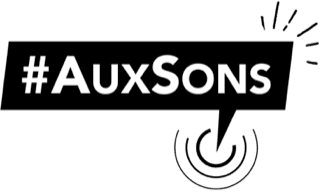An archipelago of 18,000 km² in the middle of the Pacific Ocean, New Caledonia is home to a prodigious diversity of languages and cultural communities among a population of just under 300,000. Its musical expressions – long polarised and fragmented – are now gradually fusing traditional Kanak references with borrowings from all around the world…
In September 2019, census takers will knock on the door of every New Caledonian home, just as they do every five years. Once again, there will be a question about the ethnicity of the respondent: Kanak, European, Wallisian or Futunian, Indonesian…? This is the only French territory where such precision is required. The segmentation into large ethnic and cultural groups revealed in this way also lies behind the richness of a society that will be called upon over the coming months to agree on its institutional future.
This constant tension between affirming one’s identity and the appeal of external influences is certainly typical of a French-speaking archipelago isolated in a mainly English-speaking region of the world, but especially so of its broadly diverse musical expression.
Kaneka music, a “tempo born of the Kanak people”, emerged in the 1980s thanks to the visionary impulse of the political leader Jean-Marie Tjibaou. It is a music that has served as a megaphone for the 28 Kanak languages still spoken and a spokesperson for a people discredited - segregated even - on their own land. From the outset, the movement fed off the fertile soil of tradition, sprinkled with instrumental and stylistic contributions from world music. Long before the arrival of European explorers, the Pacific Islands were connected; there were no boundaries between what has since come to be called “Melanesia” and “Polynesia”. This melting pot of influences is felt even in cultural practices.
Aé-aé chants - regularly echoed in contemporary tunes - originally represented the eternal chorus heard along waterways, as well as the source of Kanak genealogies. Percussion instruments made the land tremble and speak, whether it was being worked for yam or scarred for the exploitation of nickel. Made from bark, leaves and bamboo, traditional instruments became part of a signature sound when they were called upon to provide the lifeblood of kaneka. The missionaries who arrived in the 18th century came across Melanesian voices and today’s polyphonic heritage can be heard in odes that are powerfully interpreted, especially in choruses.
Instruments left by decades of visitors were added to this heritage - from sandalwood merchants to US soldiers: the whistles used on ships became “wessel” in the Drehu language, recalling the language of the first visitors, and are now used in traditional songs and dances; the harmonica spread throughout the archipelago; and the guitar is often played in a picking style.
Gulaan – the Kanak herald of the talent show The Voice 2018 – is among the champions of this guitar technique, in which arpeggios stand out clearly, serving as a showcase for a sublime Nengone language, from his native island of Maré.
Nameneng me deko se sheusew – Gulaan. The composer of this ballad recorded in a cave on Maré island is none other than the Grand Chief of the Guahma district, under whose leadership the project Nengone Town Experience was founded with different artists.
Can we feel the emotions of an evolving society through the filter of music? Whatever the case, taking into account a number of claims made by the representatives of indigenous peoples in the successive Matignon (1988) and Noumea (1998) agreements has contributed to giving kaneka music a more festive sound. The greatest hits of pioneers like Gurejele (C’est la France qui paie – [France pays] …) and Edou and his group Mexem seemed to overcome community affiliations, attracting a multicultural audience both on “Le Caillou” [literally, “the pebble”, meaning Grande Terre, New Caledonia’s main island] and “beyond the reef”. Nowadays, this festive vocation can be felt particularly in the notable influence exerted by the rhythms from the Caribbean (zouk, kompa…), not only much appreciated by its audience, but also digested and integrated with regularity by local groups in their compositions.
However, many lyrics still serenely carry a message of emancipation with an emphasis on parables or revealing aspects of Kanak philosophy to an audience that does not necessarily speak the language or is uninitiated – for instance, by the group Cada, native to Hienghène, Jean-Marie Tjibaou’s hometown. The “fighting” music of the early days – built on a two-beat rhythm especially in the North – is still going strong. It is usually said to be more invigorating and dissenting in the north of Grande Terre, while the sound of the Loyalty Islands is more languorous and melodic. The reason given is that of different colonial histories, military incursions and land dispossessions on Grande Terre that did not reach the islands, declared as protected sites from the outset. In reality, this split has tended to fade with time.
(“Orian” - Jyssé: declaration of love to the Xodre tribe in Lifou, sung in this case by a 12-year-old boy…)
So-called “Melanesian” folk, born in the 1970s, was the first sign of a music both infused and diffused on Le Caillou. Its template was inspired by Tahitian waltzes - the only music from Oceania broadcast on the radio at the time - the typical nostalgic tone of tapéra choruses (or “temperance”, taught by pastors), an almost exclusively choral song that praises the collective, using the ukulele to provide the rhythmic pattern. Side-lined by its more rebellious younger brother kaneka, Melanesian folk began to find favour once again in the 2010s. The “old-timers” of Bethela are still around and have released new and more powerful choruses, while the Ouvea atoll (Blue Hau, Iaai Tradi) has contributed much to the revival of this ultimate ethnic music.
Folk also comes to the foreground whenever we mention these light-weight groups whose sound reflects a mixture of influences inherited in turn from kanak sounds, tainted with French chanson, jazz and bossa nova - Inu or Kaori.
The musical career path of slide guitar virtuoso Jason Mist has been strongly influenced by life experiences in India and New Caledonia’s neighbour, Australia. Alongside a rock scene that favours expression in English, a predilection for country music – with both Aussie and US references - also brings the New Caledonian musical mosaic to life.
In recent years, styles have intertwined with varying degrees of artistic success. The most recent example comes from the fruitful collaboration between the rising star of New Caledonian reggae Marcus Gad, from Noumea, and Jean-Yves Pawoap, singer, leader of the A7JK group and chief of the Pombei tribe in the north of Grande Terre. This forty-year-old found himself and Marcus propelled onto European stages for a summer tour in 2018. His powerful, husky voice, which comes out of his guts, carried choruses in the Cemuh language to European audiences.
New Caledonia, like its island neighbours (Vanuatu, Solomon…), was a chosen land for reggae from a very early stage. And while sounds created in Jamaica found a powerful echo in the mountains of Le Caillou, South Africa has also inspired generations of musicians enchanted by the aura of Lucky Dube, the vibrant and fluttering sounds of his keyboards and the warmth of his choruses during the three memorable Caledonian concerts performed by the maestro. Groups such as Soul Sindikate or I & I have received recognition abroad, while enjoying pilgrimages to Kingston to record music with some of the apostles of the genre…
The exodus - rural and tribal - has also transformed Noumea into a cosmopolitan capital of contrasts, at the same time multiplying inequalities and prolific cross-fertilisation. From this music, by definition urban, emerged emancipated singers from the “land of the unspoken”, such as the adventurer Paul Wamo, who has now been preaching in mainland France for more than five years. Born out of slam, an exuberant personality and proud ambassador for his island Lifou, Wamo has surrounded himself in turn with pop, reggae musicians (Haut-Parleur Pacifique project) and electronic music to escort his flow.
“Aemoon”: “Noumea” in the French slang known as verlan.
They are almost like “collectors of butterflies flapping their wings” … The Wada project’s dub and psytrance fans have scoured the bowels of the island and sampled snippets of ceremonial speeches and other archives over these harvested sounds. And at the crossroads of politics and culture, we hear the voice (in English please!) of the late Jacques Kiki Karé - one of the “brains behind the scene” of kaneka - on the tribute song.
Listen to “Si y’a pas toi” by WADA
Hip-hop did not find its feet in Caledonia until the early 2000s. But it ended up rallying a whole generation of young people in search of new references, who had grown up in Noumea’s low-income neighbourhoods and were attracted by the discipline and codes of breakdance in particular. It is, however, rare to find lyrics as incisive and strident - paying tribute to the anti-establishment role of the early days of hip-hop - as we hear in “Désaccords Communs”, sung by the duo Nasty & Reza.
Greater Noumea (the capital and its neighbouring municipalities Mont-Dore, Dumbéa and Païta) is a huge melting pot in which communities from across the Pacific and the Asian continent are blended together.
Wallisians and Futunians began to arrive at the time of the nickel boom in the 1970s. There are now more of them on their adopted archipelago than in their “Fenua” homeland. They brought with them their musical baggage, traditional dances and highly chanted songs such as the soamako, originally warlike but now jubilant. An ambassador like Tyssia, who is very accustomed to singing in French, performs “Tagi Tagi” [My tears] – backed by Gayulaz, a band from Lifou – with great sensitivity here in the faka’uvea (Wallis) language.
A musical expression of New Caledonia’s Indonesian association, the group Angklung Vibrations has recently rediscovered the traditional sounds of bamboo. Musicians have travelled several times to train with master percussionists of Angklung on the island of Java and at the same time renewed a link with a long-forgotten past.
The song “Sanggupkah Kita” [Are we able?] meets the quiet phrasing of the young slammer Simane Wenethem. This song – which in turn contains verses in Drehu, Bahasa Indonesia and French – sounds like the successful symbol of a dialogue between cultures that have yet to finish reuniting the rebirth of their roots with the call of the canoe.


